Klue Compete
The Competitive Enablement Platform
Learn More
FIND OUT MORE >

This article is a part of our Competitive Battlecard 101 series. This week we’re featuring the Approach-to-Market battlecard. To view all of our battlecard you can find a running log of the series here.
Everyone’s experience-level with battlecards is different.
If you’re not quite ready to build battlecards, or you’re looking to move past the 101 of it all, we have a free resource for you to check out.
Our Competitive Battlecards Video Series puts the experts front and centre. Watch as Klue and industry experts take you through the theory and practice of building battlecards.
And if the word “theory” makes you think of a crowded university lecture, don’t worry.
We promise this is not another boring online course.
The Approach-to-Market card explores your competitors’ go-to-market strategy. It looks at the verticals and departments they serve and how they sell. Understand how the sales reps you face-off against are selling, and you’ll make better decisions about your own sales strategy.
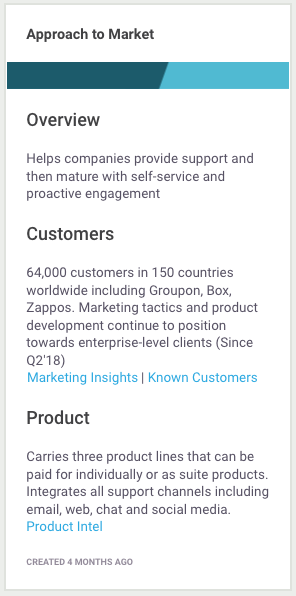

For example, if your competitor is quick to lower its prices, that strategy might affect which prospects to target and how you price competitively.
Another example concerns a competitor’s marketing approach. Say they tend to push proof of concepts. If you know that your prospect will likely be given a proof of concept during the sales cycle, you’ll know that proving ROI could be key to closing the deal against that competitor.
This card shouldn’t include all aspects of your competitor’s go-to-market strategy. That’s because certain topics — such as product positioning — might be worthy of its own card (don’t worry, we’ll cover this in a future post). Keep it succinct to give your sales reps a quick understanding of how this competitor approaches customers and who they target.
Subscribe to the series Competitive Battlecards 101. In this 15 battlecard series we’ll send a new battlecard template to your inbox each week until we run out. Start building your library of competitive strategies.


Knowing what to expect from your competitors helps you make better decisions in terms of who to approach, how to approach them, and how to effectively compete against them in the sales cycle. You’ll know where to expect this competitor to pop-up and be able to plan your approach into accounts accordingly.
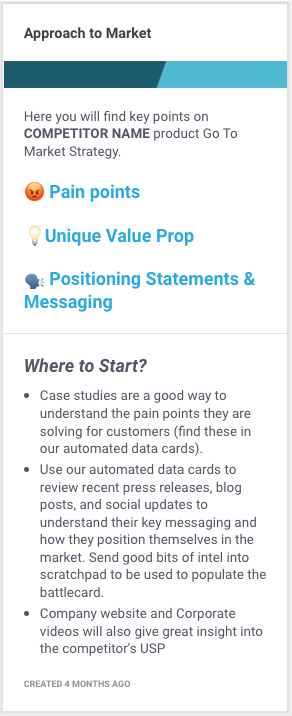

This card should contain details on a general approach to your market, key clients, verticals served, departments served and channel partners.
To build your Approach-to-Market card, look at the resources available on your competitor’s website:
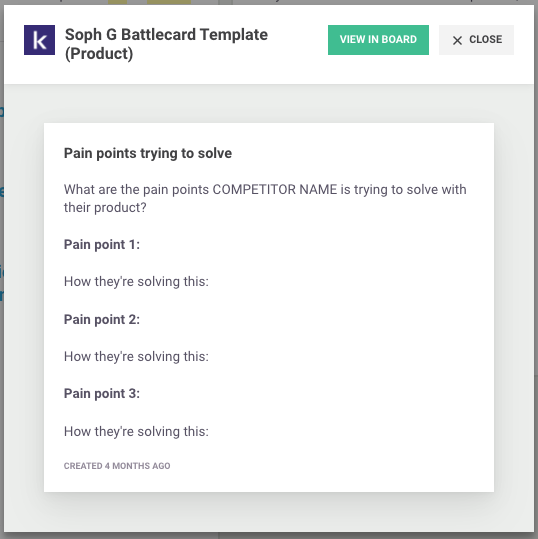

Do a general web search to find additional marketing and sales collateral to flesh out your insights on their strategy. Has senior leadership presented at a professional conference recently? Have they conducted webinars for shareholders?
Learn more quick tips on tracking your competitors from this article.
The Approach-to-Market card is part of our Overview Battlecard Template (click the image below to expand), which is a set of eight of the most commonly used cards we’ve seen across hundreds of battlecards. We’ll cover these cards one by one before moving on to the next full battlecard template.
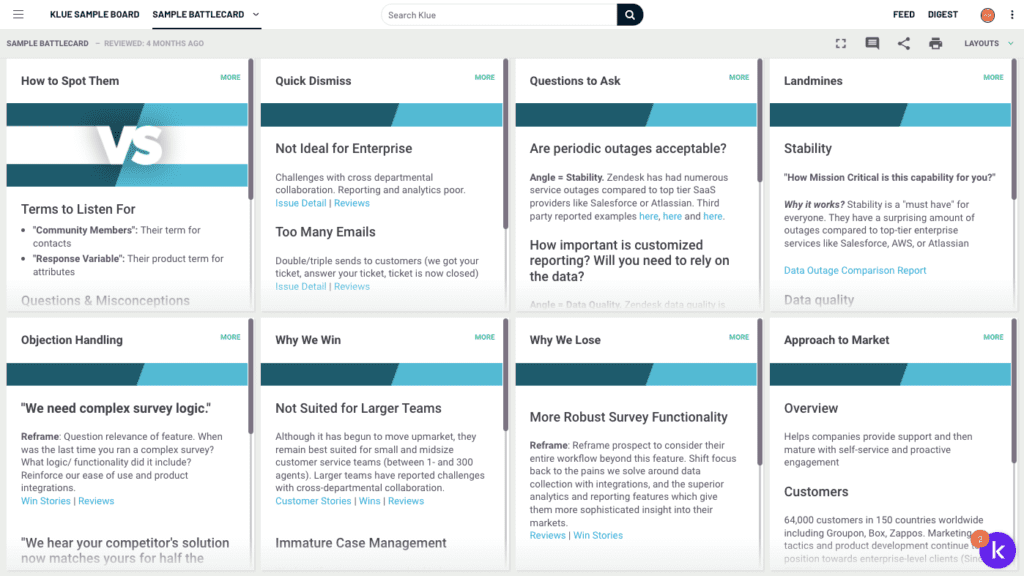

Ready for more? Next up in our series will be the “Company Overview” card.
If you’ve come this far and you’re still looking for more on battlecards, download our Competitive Sales Battlecards 101 Ebook.
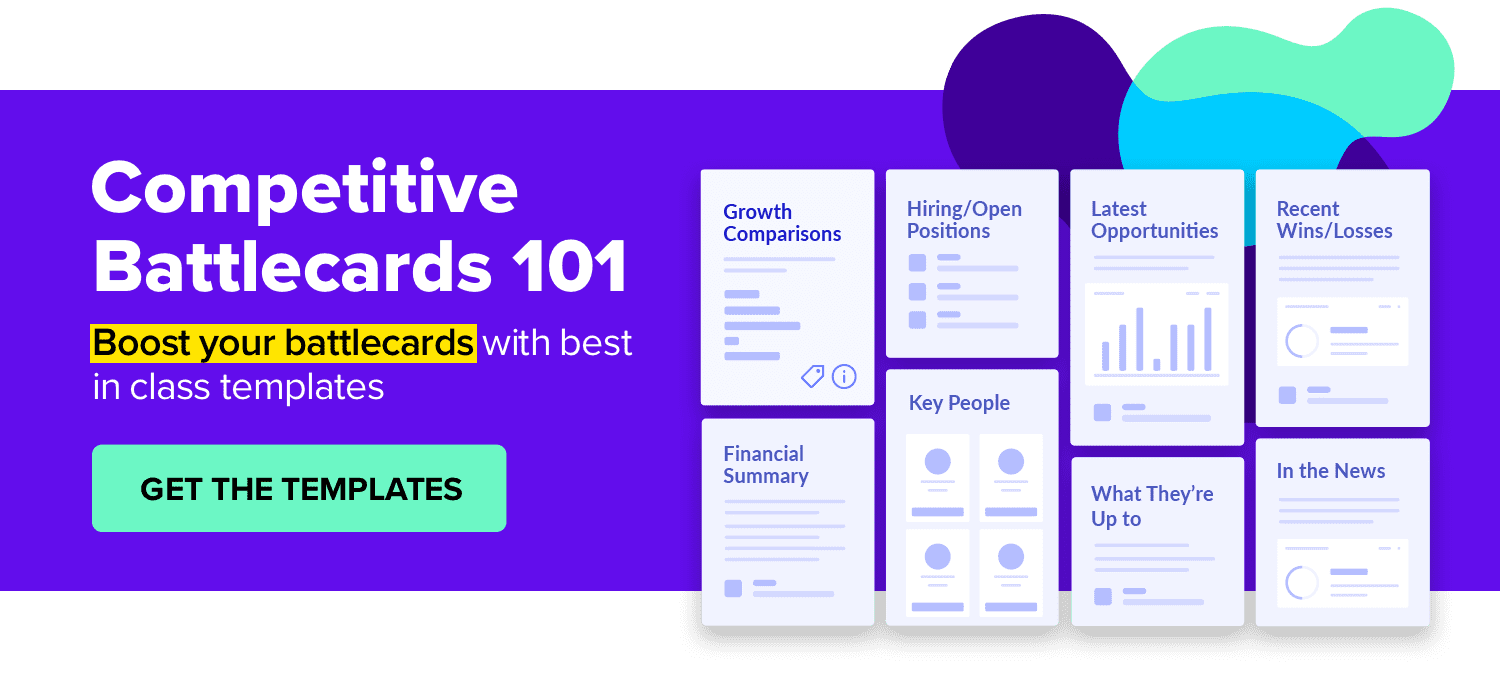



Competitive Enablement
The topic of Large Language Models (LLMs) has a lot of confusion. Here's what you need to know about how Klue is working with them.


Competitive Enablement
Product Marketing
If your competitive intel game is too strong for automation, too pure for data privacy, and too rebellious for accuracy — then Klue AI is probably not for you.


Let’s do it. Tell us a bit about yourself and we’ll set up a time to wow you.
Let's do it. Tell us a bit about yourself and we'll set up a time to wow you.
XLet's do it. Tell us a bit about yourself and we'll set up a time to wow you.
XSubscribe to get our latest AI functionality and news in your inbox.
XOur Buyer Pulse feature, set to launch in Q2 2024, offers valuable insights into the factors influencing buyer decisions in your pipeline. By signing up for the waitlist, we can better gauge interest and proactively engage with you to streamline the setup and integration process before the feature becomes widely available.
X